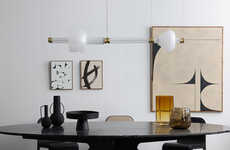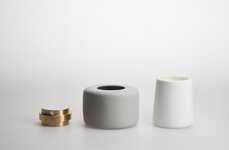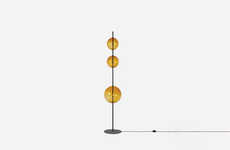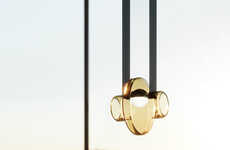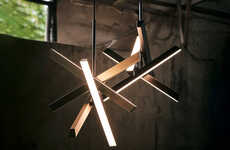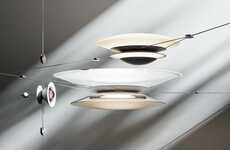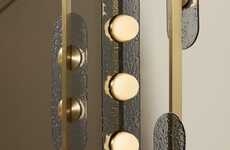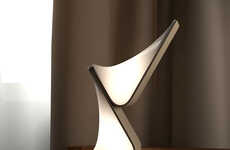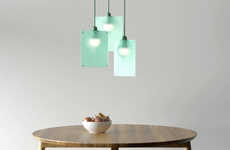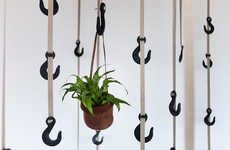
Cradle of the Light Plays with the Concept of Suspended Modularity
Amelia Roblin — January 24, 2012 — Art & Design
References: behance.net
Modularity in furnishings often involves the coherent geometric assembly of several objects which can be easily configured together to create a larger whole. In terms of the Cradle of the Light lamps, the notion of combining modules is a little different. Instead of arranging pieces with the firmness of the floor beneath, these lampshade units must be carefully suspended to hang in precise alignment.
Niki Mihaylov has created two nearly identical fixtures, with the only difference between them being the location of the lightbulb hole and the consequent vertical orientation. The gorgeous shapes are reduced from the smooth forms of spheres, sliced at the sides to emit illumination indirectly for activities immediately below. Each Cradle of the Light pendant lamp looks wonderful when hanging solo and whimsical when displayed in an alternating row.
Niki Mihaylov has created two nearly identical fixtures, with the only difference between them being the location of the lightbulb hole and the consequent vertical orientation. The gorgeous shapes are reduced from the smooth forms of spheres, sliced at the sides to emit illumination indirectly for activities immediately below. Each Cradle of the Light pendant lamp looks wonderful when hanging solo and whimsical when displayed in an alternating row.
Trend Themes
1. Suspended Modularity - Creating furnishings where modules must be carefully suspended to hang in precise alignment opens up opportunities for disrupting traditional furniture design.
2. Indirect Illumination - Inverting lampshades to emit illumination indirectly for activities immediately below could disrupt traditional lighting design.
3. Whimsical Displays - Optimizing how fixtures look when presented in an alternating row could disrupt traditional interior design practices.
Industry Implications
1. Furniture Design - The concept of suspended modularity creates disruption opportunities in traditional furniture design, which could lead to new innovations.
2. Lighting Design - The inverted lampshade design could create an opportunity to disrupt traditional lighting design, providing new ways to emit illumination.
3. Interior Design - Designing fixtures that look great when presented in an alternating row could inspire new trends in interior design.
5.5
Score
Popularity
Activity
Freshness

